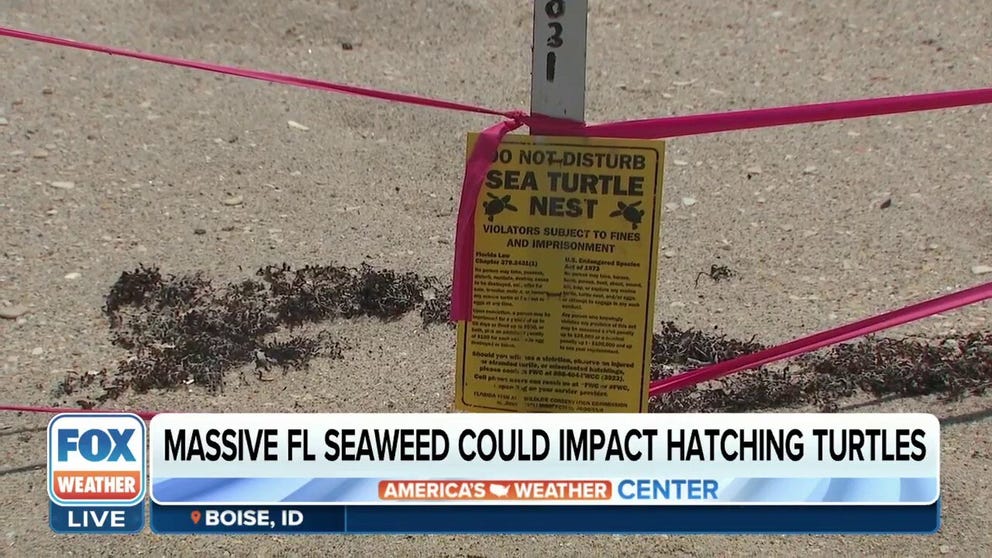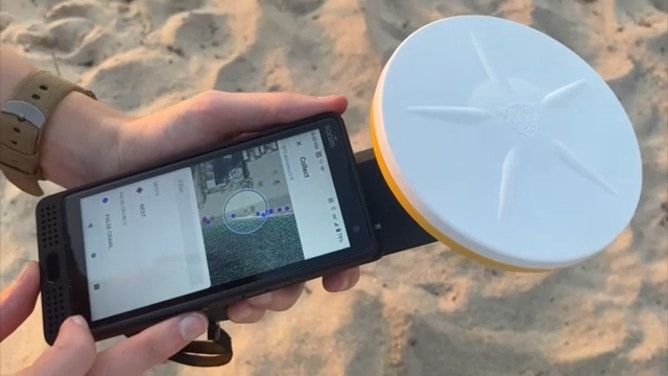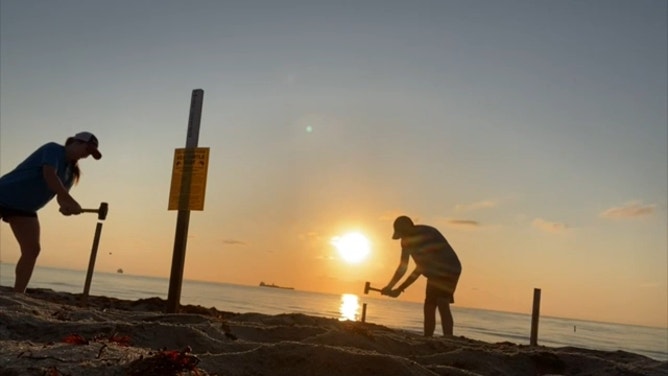How Florida's sargassum seaweed blob may impact sea turtles during nesting season
Sea turtles have to contend with seaweed, beachgoers, city lights and other factors to lay their eggs on Florida beaches. Officials say the turtles lay an average of 3,000 nests every year.
Sargassum could impact hatching sea turtles on Florida beaches
Surveying is done throughout the season between March and October 31st, every day, starting before sunrise. FOX Weather's Brandy Campbell learns why this is important, what they do and what beachgoers should know in order to protect the turtles.
FORT LAUDERDALE, Fla. – Crews with the Broward County Sea Turtle Conservation Program are protecting sea turtles by surveying beaches and educating beachgoers about turtle nests.
Sea turtles annually come to the south Florida coastline to lay their eggs on the sandy beaches. According to BCSTCP officials, the turtles lay an average of 3,000 nests yearly on Broward County beaches.
"Our beach is very popular for nesting sea turtles," said Abby Evans, permit holder with the Broward County Sea Turtle Conservation Program.
As turtles try to lay their nests, however, they have to contend with sargassum seaweed, beachgoers, city lights and other factors.
Surveying the beach for sea turtle nests
To help the turtles and their nests, BCSTCP officials survey the beaches every day, starting before sunrise and driving up and down the beaches to mark off new nests and maintain existing nests.
FLORIDA'S SEA TURTLE SEASON BEGINS BUT SOME NESTS ALREADY DOT THE LANDSCAPE
The team has conducted daily sea turtle nesting surveys since March 1 and will continue through Oct. 31. So far, the team has found about 230 nests in Broward County, finding around 20-to-30 nests each morning.
Evans said the turtle eggs are currently in their incubation period and are expected to hatch in the next week or two. At that point, the hatchlings will make their way from the sand to the sea.
Ways to help the baby sea turtles

Surveying beach for sea turtle nests.
(Brandy Campbell / FOX Weather)
In addition to surveying beaches, the BCSTCP crews are educating those on the beach on how their activities can impact the critical journey the baby sea turtles will make, and sharing ways they can help the hatchlings.
Some examples include picking up trash and knocking over sand castles, which can serve as barriers between the turtles and the sea. Holes in the sand can also be an impediment for the hatchlings, so the BCSTCP crews ask to fill them back in.
Beachgoers are also encouraged to leave their lights off at night. According to Evans, the turtles hatch at night and then follow the brightest part of the horizon – usually the moon – to find their way the ocean. If the brightest part comes from inland or other artificial light sources instead, the turtles may become disoriented and move in the wrong direction.
How seaweed can be too much of a good thing for turtles
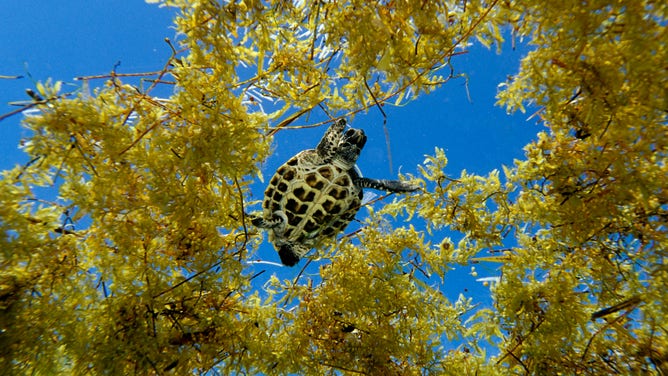
Hawksbill turtle in sargassum weed near Florida.
(Mark Conlin / VW PICS / UIG / Getty Images)
One factor that can affect sea turtles is sargassum seaweed. Depending on how much and where sargassum is found, the plant material can do great harm or good for the hatchlings.
According to Broward County environmental project coordinator Stephanie Roche, the baby sea turtles depend on sargassum for the early parts of their lifecycle. This is when the hatchlings, once in the ocean, float on large mats of sargassum that provide a habitat, shelter and food.
FLORIDA BEACHES SMOTHERED IN SMELLY SARGASSUM SEAWEED WITH PEAK SEASON NOT EXPECTED FOR MONTHS
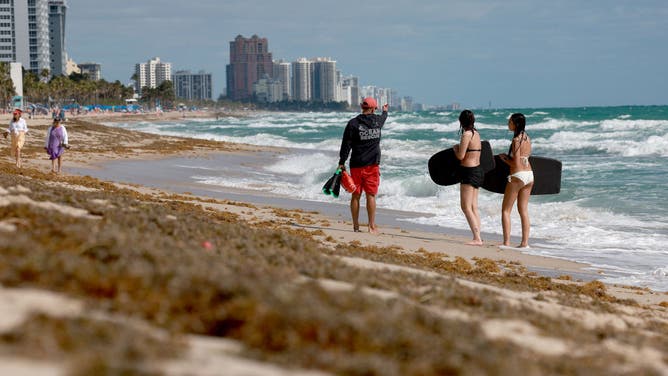
Beachgoers walk past seaweed that washed ashore on March 16, 2023 in Fort Lauderdale, Florida.
(Joe Raedle / Getty Images)
Before the hatchling reach the ocean, however, large amounts of sargassum can be harmful for the turtles as it can disrupt their nesting or hatching.
"That's why we're hoping that it's not too bad this season," Roche said. "It looks pretty average so far. It looks okay, and so, we're hoping it stays that way."
Sargassum will continue to wash ashore for many Florida beaches. According to University of South Florida College of Marine Sciences professor Chuanmin Hu, the peak months for sargassum to reach beaches in the Florida Keys and east coast of Florida include May, June and July.
